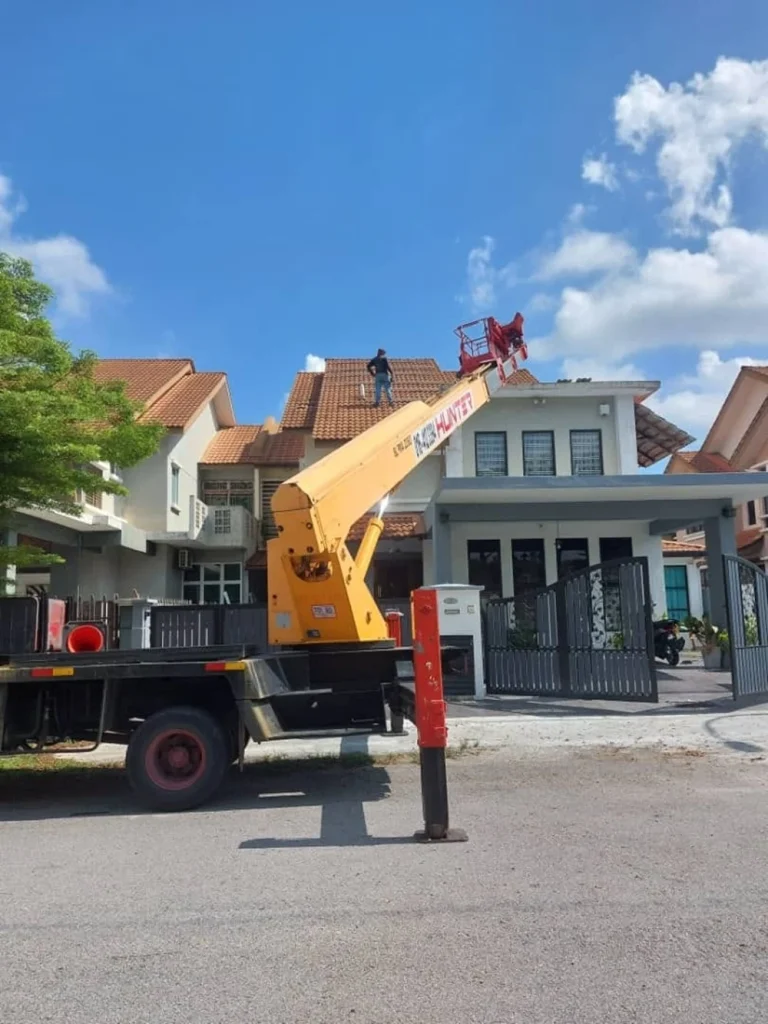
- Homeowners are saving on electricity bills through solar energy systems as installation costs decrease and government incentives, like the NEM scheme, make it more affordable.
- Malaysia’s growing solar adoption is driven by falling panel prices, financing options and increased interest in sustainable energy solutions.
- The NEM scheme enables households to reduce reliance on TNB by generating their own solar energy, with the option to supply excess energy back to the grid for credits.
- Solar systems offer long-term financial benefits, with many users seeing a return on investment within 5 to 8 years.
- New technologies, including energy storage solutions and peer-to-peer energy trading, are making solar power even more attractive to homeowners.
KUALA LUMPUR, Dec 3 — When Jeffrey Chou moved into his new home in Damansara, he anticipated high electricity bills due to his fish pond and nine air conditioners.
His concerns grew when a two-week family vacation resulted in a bill still running into the hundreds. This prompted him to explore solar power as an alternative.
At the time, Chou’s electricity bills for his two-storey terrace house averaged between RM900 and RM1,100 per month.
“Having tracked (electricity bills) consistently at RM1,000 or more per month and wondering why the bill was still so high (while away from home) during the vacation, it was time to look into investing in solar power as a long-term investment,” he said when contacted.
About a month ago, he installed 27 solar panels and the accompanying system for RM34,000, significantly lowering his expenses.
Although Chou is ineligible for rebates under the NEM 3.0 (Net Energy Metering) scheme, which has reached its quota, he still saves on electricity.
“We’re not eligible for any kickbacks as the government’s NEM 3.0 (Net Energy Metering) quota is full, but we’re still saving on electricity as the bill is now around RM650-RM700 per month.
“Once the quota is open and we get a slot, then we can look into getting returns on our investment,” he said when contacted.
“The alternative was to keep spending money (paying electricity bills as usual), knowing it’ll increase in the future, so this was a good financial decision.”

A drone shot of a solar panel installation on a roof shows how panels are carefully arranged to fit the available space. Panel sizes vary depending on the roof’s dimensions, and larger panels are typically used to generate more energy.
A drone shot of a solar panel installation on a roof shows how panels are carefully arranged to fit the available space. Panel sizes vary depending on the roof’s dimensions, and larger panels are typically used to generate more energy.
Another homeowner, Muhammad Hazwan Yunus from Keramat, faced similar issues with monthly electricity bills of RM650 to RM700 and rising.
He, too, had nine air conditioners at home and his situation was compounded by frequent family gatherings that spiked electricity usage, especially during weekends.
Hazwan turned to solar financing and found companies which offers system installation with no upfront costs.
Initially sceptical, he researched the concept and found it viable.
“You rent the system with a meter installed, and the company charges you accordingly,” he said.
“I took this substitution plan from Sols Energy and they installed the system, but now I have two bills. One to Sols, who charge 46 cents per kWh (Kilowatt-hours), and the other to TNB.
“Now the TNB bill is around RM60 and the Sols bill is around RM420. I still save,” he told Malay Mail.
According to TNB’s bill calculator, homeowners consuming between 2,000 and 2,300 kWh monthly — leading to bills of RM1,000 to RM1,200 — would see their costs rise to RM1,300 to RM1,500 after adding the 8 per cent service tax.
To understand how many kWh you’re using, click this link to TNB’s bill calculator.
As of January 1, 2024, electricity prices in Malaysia are as follows:
- First 200 kWh: 21.80 sen/kWh
- Next 100 kWh: 33.40 sen/kWh
- Next 300 kWh: 51.60 sen/kWh
- Next 300 kWh: 54.60 sen/kWh
According to solar panel installers Malay Mail spoke to, for residential solar systems, the maximum capacity is 17 kWh, which can save households between RM950 and RM1,000 per month.
A typical solar panel generates 400 to 500 watts, so a 22-panel system produces about 11 kWh.
The cheapest installations cater to homes with RM200 to RM250 monthly bills, while the priciest systems target households with bills exceeding RM1,500.
Meanwhile, prices for solar installations have dropped by 20 per cent.
A vendor highlighted that the price of a 22-panel solar system has dropped from RM43,000 last year to RM36,000, thanks to improved panel quality and increased imports from China, which have contributed to these cost reductions.
Abdul Wahid Ibrahim, an IT manager in Johor, installed a solar system in June to manage bills that exceeded RM1,000, especially during school holidays when his kids were around.
He viewed solar power as a strategic investment for long-term financial stability.
“The setup includes 23 solar panels, generating 12.65 kWp for a three-phase power supply. I have 23 panels and my TNB bill is RM20-40 now and the entire thing cost around RM23,000.

Solar panels being installed with the help of a crane and a team of two to three workers, starting in the morning and working until night. — Picture via Facebook/Abdul Wahid Ibrahim
Solar panels being installed with the help of a crane and a team of two to three workers, starting in the morning and working until night. — Picture via Facebook/Abdul Wahid Ibrahim
“I pay RM560 monthly (for the solar panels) through a credit card instalment plan and RM20 to RM40 to TNB. This is about RM600 monthly compared to RM800 to RM1,000 previously,” he said.
Abdul Wahid expects to break even in under five years.
“At the moment, NEM 3.0 is a ten-year term, but once I’ve cleared this credit card payment, I will pay only RM40 per month,” he said.
Abdul Wahid said he preferred to pay for the system outright as he could break even faster than taking a seven- to 10-year plan with a company.
“Since I installed mine, I’ve noticed three or four other households in my area doing the same.
“Panel prices are generally lower now compared to a year ago, but there might still be some variation. Back then, solar panels was much more expensive,” he said.
“If you calculate properly, it’s manageable, and you can break even. Some people think it’s expensive, but with payment schedules — say, using a credit card stretched to 50 months — it becomes much cheaper.
“Unfortunately, many vendors only partner with banks for shorter terms, like 12 to 36 months. If they offered financing for 48 to 60 months, it would be much easier for most people,” he added.
Malaysian Photovoltaic Industry Association (MPIA) president Davis Chong observed a significant uptick in installations, with major urban centres like the Klang Valley, Johor and Penang leading the charge, with growing interest in states such as Kedah, Melaka, Perak and Negeri Sembilan.
Chong said homeowners can expect to see returns on investment within five to eight years, with some achieving payback even sooner.
“Over a 25-year period (the typical warranty period for solar panels), homeowners can save significantly on their electricity bills.
“For example, a system that costs RM45,000 to install could save an estimated RM90,000 over 25 years,” he told Malay Mail.
Davis also said financing options have expanded, with solar loans and innovative business models making installations more affordable.
Programmes like NEM and the SolaRIS rebate offer financial incentives, further encouraging adoption.
Technological advancements, including Battery Energy Storage Systems (BESS), is also making a difference, allowing homeowners to store excess energy for later use.

The inverter panel is compact, sleek, and designed to withstand the elements. Built to save space, it effectively performs its function while maintaining a streamlined appearance.
The inverter panel is compact, sleek, and designed to withstand the elements. Built to save space, it effectively performs its function while maintaining a streamlined appearance.
Some new housing developments are also pre-installing solar systems, easing adoption for buyers.
“On top of that, I think P2P (peer-to-peer) energy trading is a really interesting development. This allows homeowners to sell their extra solar energy to others, creating a new way to earn money from their systems.
“It’s a win-win because it makes solar (energy) more financially attractive and could encourage more developers to invest in residential solar (systems),” Chong added.
Sols Energy spokesperson and teacher Raj Ridvan Singh said urban and suburban areas, especially in states like Selangor, Negeri Sembilan and Pahang, are experiencing significant growth in solar adoption.
He added that government incentives, such as the SolaRIS RM4,000 rebate, have significantly reduced installation costs, making solar more accessible for homeowners.
The NEM scheme, introduced by the Malaysian government, reduces reliance on TNB by allowing households to supply excess solar energy back to the grid in exchange for credits.
When solar energy is insufficient or during the night when sunlight is unavailable, TNB will supply the energy to meet the household’s needs.
According to the Sustainable Energy Development Authority (Seda), the current NEM rakyat quota balance is 44.7 MWac, though applications is around ten times that at 405.3 MWac.
For more information on NEM quotas, visit Seda’s website.
Source: Yahoo!




























